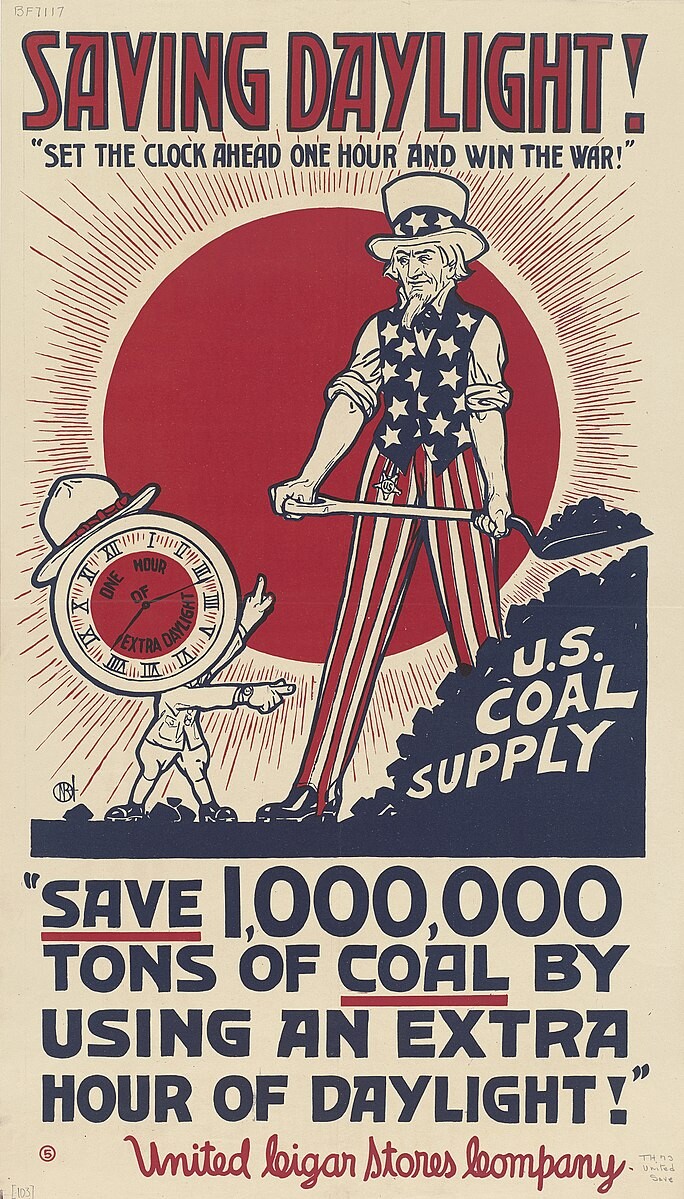Daylight Savings Time Has Nothing To Do With Farmers

The practice of daylight savings time is, shall we say, not universally beloved. Its use and implementation are always contentious, which is a very proper way of saying that certain people hate it with such a deep passion that they wish it could take a corporeal form in order for them to bring it to a swift, vicious, gory end. As a freelance writer with severe insomnia, the prominence of the sun serves basically no purpose in my life outside of trying to unsuccessfully guilt me into going outside, so I don’t harbor that level of fury. I will say that every time I remember it exists, which is the twice a year where my microwave clock is wrong for 2 weeks, my body is irrigated with a strong, if mild, sense of overwhelming irritation. Even the government has apparently had enough, trying to push through legislation to make daylight savings time permanent, which is an absolute nightmare of a proposal disguised as convenience. The complications of that decision, however, require their own article. One that I already wrote.
Today, though, we won’t get into the divisive politics of clock manipulation, but instead, take a look at when and where daylight savings time comes from, both in failed attempts to make it a reality and the successful ones that last through today. I guarantee you, it is both more complicated and far dumber than you could ever expect. One of the biggest things you’ll learn when looking deeper into Daylight Savings Time is that almost every single facet of the system is truly, deeply obnoxious. For example: the whole continental U.S. uses it! Except for Arizona. Except that the Navajo territory within Arizona DOES use it. Except for the Hopi reservation WITHIN the Navajo territory that doesn’t observe DST. Like I said. Obnoxious.
Don't Miss
Before we get into the actual origins of Daylight Savings Time, let’s first cover the fake origins. There’s a prevalent myth or misunderstanding that Daylight Savings Time has something to do with farming. Further questions will likely get nothing more than some mumbled reasoning and someone needlessly bringing in the idea of crop rotation. In reality, daylight savings time has absolutely, definitively, jack shit to do with farmers. This is because farmers base their days around the actions of livestock and plants, two things that not only cannot read the time, but are not even aware of the existence or general idea of a clock. You can’t just call an all-hands and tell the cows the milk deadline’s getting pushed up an hour. They are big dumb animals that know only grass and staring.

The first person to suggest an idea close to modern Daylight Savings Time was famous tiny-glassed inventor Benjamin Franklin, but it was suggested as a joke. He wrote a satirical proposal suggesting that people wake up earlier every morning in the interest of saving money on candle budgets, unknowingly creating a centuries-old predecessor to the famous dril tweet. It was more of a general change in lifestyle than a clock-official change, including other adjustments to daily life, like waking everyone up early in the morning by firing cannons (not at them, just into the air). It is still unknown what comedy website Franklin wrote this satire for.
The first to suggest a genuine Daylight Savings system that works similarly to the one who exists today was a New Zealish man named George Hudson. He was an entomologist, which is a scientist that’s a freak for little bugs. George loved collecting his nasty little beasties so much that he was sad that he didn’t have much time after work to go out with his special net and nab a bunch of buzzy new friends. To this moment in time, I have never thought about how difficult it would be to catch any non-firefly insect at night, and I now think it might be truly one of the most unpleasant things I can imagine that does not involve physical or mental violence. Anyways, in 1895, bug boy wrote a proposal to move all clocks back by 2 hours, but it never moved forward despite getting pretty serious consideration.

Ten years later, in 1905, an Englishman named William Willett cooked up his own proposal, with no knowledge of Hudson’s attempt. He also proposed changing the clocks of the nation during the summer months. Willett’s great and noble inspiration for this sweeping modification of an entire population’s timekeeping? He was pissed off that he kept having to stop playing golf when the sun went down early. Though it does feel very much in the spirit of a rich golfer to raise an issue with their tee time to the level of Parliament. Again, the bill went under consideration, but was ultimately denied, to the detriment of Willett’s handicap.
The first place for it to ever be officially adopted was in 1908 in Port Arthur, Ontario, where I suppose they just got tired of it being dark all the time and were the first brave enough to say “f**k what the clock says.” A few years later, DST was widely adopted across Europe and America, this time for one of the most compelling reasons imaginable: war. Specifically, one of the World ones. Countries on both sides of the conflict moved clocks back an hour to reduce coal usage during wartime. Meaning, in a weird way, the thing that finally made DST happen was exactly Benjamin Franklin’s reasoning, just that society started using a much more expensive kind of candle.

This first version only lasted a couple months, but it was brought back again during World War Two, and after that war ended, the U.S. left it to local governments to decide what they wanted to do. Between the end of the war and 1966, literally every single local jurisdiction could decide whether they wanted to observe DST, and for what parts of the year. As you might imagine, having the time of an entire first-world country exist with what was basically a one-hour margin of error from county to county was an absolute shitshow, so in 1966, the Uniform Time Act was passed that set up DST as we know it today. At least until Congress pushes through permanent Daylight Savings Time. Something they already did once, in 1974, and then repealed because people hated it. But why would lawmakers ever look to history for guidance?